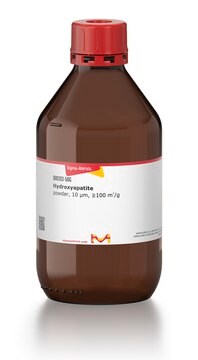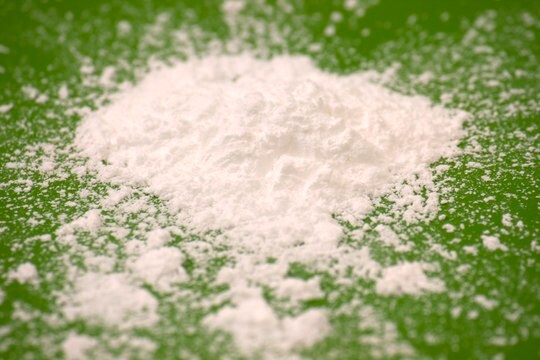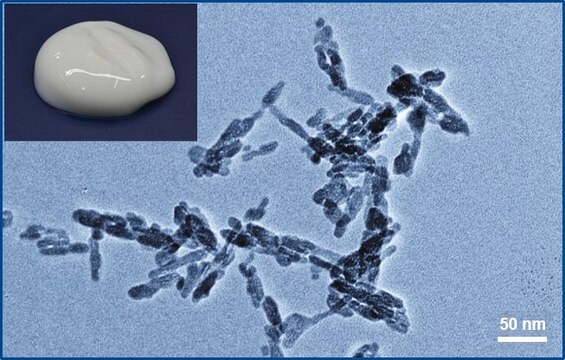693863
Hydroxyapatite
nanopowder, <200 nm particle size (BET), contains 5 wt. % silica as dopant, synthetic
Sinónimos:
HAP-Si, Calcium hydroxyphosphate, HAp, Hydroxylapatite
About This Item
solid
Productos recomendados
Nivel de calidad
Formulario
nanopowder
solid
contiene
5 wt. % silica as dopant
superficie
10-15 m2/g , typical
tamaño de partícula
<200 nm (BET)
mp
1100 °C (lit.)
densidad aparente
2‑6 g/cm3
cadena SMILES
[Ca++].[Ca++].[Ca++].[Ca++].O[Ca+].[O-]P([O-])([O-])=O.[O-]P([O-])([O-])=O.[O-]P([O-])([O-])=O
InChI
1S/5Ca.3H3O4P.H2O/c;;;;;3*1-5(2,3)4;/h;;;;;3*(H3,1,2,3,4);1H2/q5*+2;;;;/p-10
Clave InChI
XYJRXVWERLGGKC-UHFFFAOYSA-D
¿Está buscando productos similares? Visita Guía de comparación de productos
Aplicación
Información legal
Código de clase de almacenamiento
13 - Non Combustible Solids
Clase de riesgo para el agua (WGK)
WGK 1
Punto de inflamabilidad (°F)
Not applicable
Punto de inflamabilidad (°C)
Not applicable
Equipo de protección personal
dust mask type N95 (US), Eyeshields, Gloves
Elija entre una de las versiones más recientes:
¿Ya tiene este producto?
Encuentre la documentación para los productos que ha comprado recientemente en la Biblioteca de documentos.
Los clientes también vieron
Artículos
Dendrimers are just one class of nano-sized materials that are explored to develop new life-saving technologies. Single-wall carbon nanotubes are used to make miniaturized sensors for DNA, pathogens, and chemicals – for example glucose sensors. Multi-wall nanotubes, nanoclays, and ceramic nanoparticles are incorporated in ultra-strong polymer nanocomposites that will be used in orthopedic, for example joint-replacement, applications.
A key challenge for nanomaterial safety assessment is the ability to handle the large number of newly engineered nanomaterials (ENMs), including developing cost-effective methods that can be used for hazard screening.
Nuestro equipo de científicos tiene experiencia en todas las áreas de investigación: Ciencias de la vida, Ciencia de los materiales, Síntesis química, Cromatografía, Analítica y muchas otras.
Póngase en contacto con el Servicio técnico






